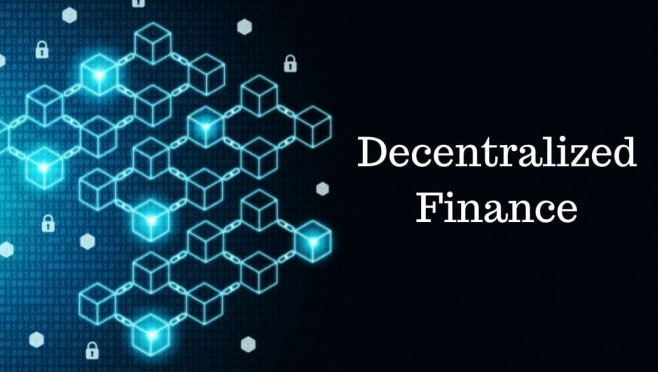
Profitable farming (from English -yield farming) is one of the most popular investment strategies indecentralized finance sector (DeFi).
DeFi is a generic term for financial products inbased on open source smart contracts. Popular DeFi protocols, such as Compound, Balancer, Curve and 0x, have opened up a whole world of new opportunities for investors who are looking for deep liquidity, a different risk / return ratio, as well as interesting and affordable modern financial instruments.
Recently, the DeFi sector has attracted everyonemore attention. After Compound handed out COMP management tokens, and some of their holders announced a 100% annual return, the community was literally crazy about farming at DeFi.
What is profitable crypto farming?
Conceptyield farmingcomes from a meme, but today it describesthe process of making a profit through any form of interaction with DeFi protocols. Farming consists of receiving rewards in native protocol tokens for providing loans or receiving loans, or for providing liquidity to decentralized exchanges and voting.
The history of farming. @ sassal0x @RyanSAdams @econoar @compoundfinance #Ethereum #bitcoin #cryptocurrency #ETH pic.twitter.com/IuYPvxHCLF
- 1thousandx (@ 1thousandx) June 24, 2020
I farm $ COMP on @Instadapp
I farm $ REN on @CurveFinance
I farm $ ETH on @tokensets
? I farm yield in DeFi?
What yield are YOU farming?
- Yield Farmer? (@Yield_Farmer) June 20, 2020
One example: on the Compound platform, users providing or borrowing funds in the main protocol are entitled to a portion of 2880 COMP distributed every day.
When in mid-June the firstdistribution of COMP, more than $ 1 billion was poured into the protocol. Then farmers decided to mass-plant COMP. This has led to a tremendous increase in demand for BAT (Basic Attention Token). Users also had the opportunity to grow COMP with flash loans on InstaDapp. See below for a detailed discussion of this mechanism.
Due to limited supply, COMP's price skyrocketed to $400, also thanks to its listing on Coinbase Pro. Then the token surpassed Maker in terms of capitalization, taking first place in DeFiMarketCap.
Related material: How did the Compound DeFi service catch up and overtake competitors? Market analysis of decentralized finance.
Balancer Liquidity Mining
Before starting to sow COMP, farmers minedBAL tokens. The launch of the liquidity mining program in the Balancer protocol took place in June 2020. As with COMP, BAL tokens were initially distributed to support the functioning of the protocol, in particular to maintain capital in the 427 Balancer pools.
The community has changed the BAL earning process. They chose an approach with an arbitrary ratio of tokens and commissions in each pool to create a cost-effective replacement for Uniswap. Thanks to the additional distribution of tokens, they coped with the attraction of liquidity.
Why profitable farming works
If we consider farming in the context of the token itself, then the mechanism for bringing tokens to the market, although conservative, is successful.
In both cases - with COMP and BAL - outstandingthere are only those tokens that were issued as a result of seeding, and the tokens of the team / investors. Since the latter have a long-term interest, farmers trade among themselves.
To make the picture clearer, let's see how tokens entered the market in the above projects:
- COMP - 2,880 COMP per day, or 1 million (1%) per year.
- BAL - 145,000 BAL per week, 7.54 million (7.54%) per year.
What is the result?That's right - a huge number of users who are hunting for a limited number of tokens. In addition, deposit interest in the case of Compound and exchange fees in the case of BAL double the liquidity return.
How farming started at DeFi
If we take a step back, we will see that even earlierCurve, a liquidity aggregator offering low-slippage transactions between similar assets, such as stablecoins or Ethereum-based tokenized BTCs, began to attract farmers.
In June, the volume of Curve for several daysin a row updated his own records, mainly due to the large number of people who want to get USDT borrowed at MakerDAO to sow COMP. As a result, the loan interest rate increased by 100% per annum.
Now that Curve funds are available in the sBTC pool, liquidity providers can receive both good returns from Bitcoin and liquidity in the form of SNX, REN, BAL and CRV tokens.
Welcome to Yield Farming. Introducing an incentivized BTC Liquidity Pool by Ren, Synthetix, and Curve Finance. @CurveFinance @synthetix_io https://t.co/gx3osusQeu
- Ren (@renprotocol) June 19, 2020
Curve announced that its own CRV tokenwill distribute retroactively among those who provided liquidity over time. Given the interest in COMP and BAL, we expect a similar demand for CRV.
Synthetix goes all the way
Users who provide liquidity to a range of trading pairs on Synthetix are eligible to receive rewards in the form of SNX, Synthetix's protocol token, by staking these pairs on Mintr.
In addition to the aforementioned sBTC pool on Curve, this method became popular thanks to the sETH / ETH awards, which users liked because of the possibility of mitigating the so-called “non-permanent losses”.
</p> 5
/
5
(
1
voice
)




